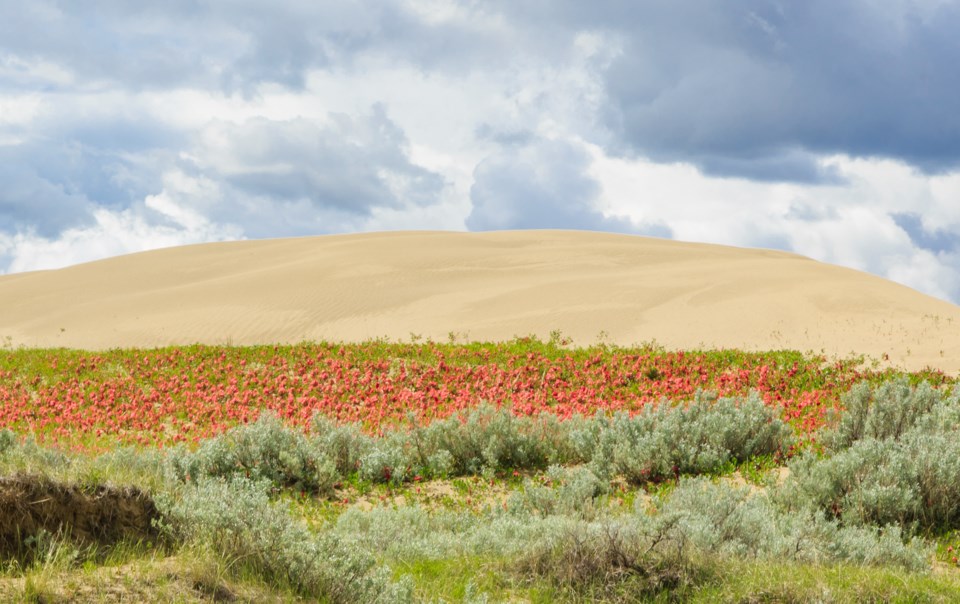MOOSEJAWTODAY.COM — Saskatchewan is an enormous province, twice the size of Germany and only just smaller than Texas, and it includes boreal forest in the north, transitional parklands in the middle, grasslands in the south — and, scattered all over, some of the world’s most prominent sand dunes.
Saskatchewan’s dunes are thousands of years old, dating to the end of the planet’s last ice age approximately 12,000 years ago. Continent-sized glaciers nearly two kilometres thick were forced into movement as they melted, creating enormous temporary rivers, carving out floodpaths, and grinding rock into fine powder, called ‘rock flour’ by geologists and ‘sand’ by the rest of us.
The process of sand deposition and erosion continues to this day and combines with prevailing winds to create an evolving scenery that can change dramatically between visits. Rolling dunes, constantly shifting sand patterns, and clear blue skies create a surreal and otherworldly landscape that is a photographer's dream — and a must-see for those seeking the full Saskatchewan experience.
There are four active sand dune locations in Saskatchewan:
- The Athabasca Sand Dunes
- The Great Sandhills
- The Douglas Sand Dunes
- The Good Spirit Lake Sand Dunes
The easiest to reach from Moose Jaw are the Douglas Sand Dunes in Douglas Provincial Park, and the Great Sandhills, south of the village of Sceptre in southwestern Saskatchewan.
Douglas Provincial Park is on the shores of Lake Diefenbaker and includes a relatively easy hiking trail to the dunes. Travel time from Moose Jaw is about an hour and 15 minutes. As a provincial park in a popular area, there are plenty of amenities including restrooms, campgrounds, and cell service.
To see larger dunes, the Great Sandhills to the west are second in Canada only to the Athabasca Sand Dunes, which are nigh-inaccessible in the province’s far north. Reaching the Great Sandhills from Moose Jaw takes about three and a half hours.
Visitors will take the Trans-Canada west for an hour and 45 minutes, then take SK-32 W exit just past Swift Current. Another hour on SK-32 W will bring you to Township Road 214 heading south. Half an hour on the township road will bring you to the Great Sandhills.
There are no amenities at the Great Sandhills, and camping is prohibited.
The area is home to a variety of interesting flora and fauna, including native grasses and shrubs, deer, fox, badgers, peregrine falcons, burrowing owls, and sandhill cranes. Visitors can bring a ‘crazy carpet’ plastic sheet or even an actual sandboard to ride down the dunes.
Before visiting any of Saskatchewan’s parks, including sand dune areas, it's important to remember to respect the unique, fragile ecosystems that are part of what makes such spaces special. Visitors should stay on designated trails and avoid damaging vegetation or disturbing wildlife. It's also important to pack out any trash and leave the area as pristine as possible.
Take only pictures, leave only footprints.




